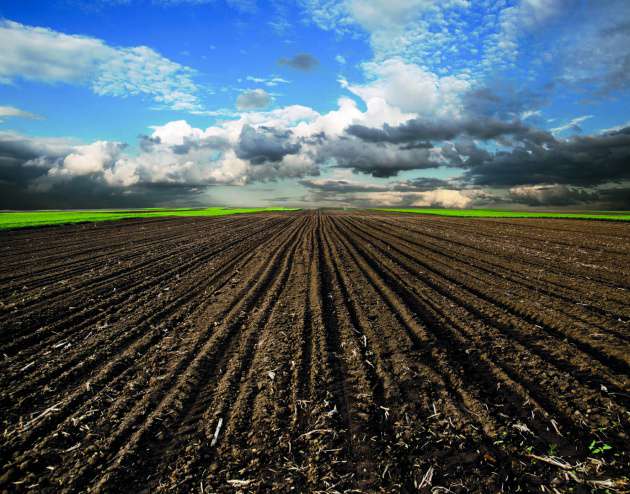Land on earth is as finite as any of our other natural resources. Scientists today believe that at least 10 percent of land and water bodies of each ecosystem must be kept as wilderness for the long term needs of protecting nature and natural resources. Soil types are red soil, black cotton soil, laterite soil, alluvial soil, desert soil etc.
In nature India is moving North East @5cm/yr (fastest continent) so the Eurasian plate deforms and India compresses by 4mm/year
Land degradation: It is the decline in land quality or reduction in its productivity or production potential caused by human activities. World wide 5 -7 m ha farm land is being degraded annually.
Mechanisms that initiate land degradation include
Physical processes: decline in soil structure leading to crusting, compaction, erosion, decertification, Ana vision, environmental pollution and unsustainable use of natural resources.
Chemical processes: Acidification, leaching, decrease in caitions retention capacity and loss of nutrients.
Biological processes: Reduction in total and biomass carbon and decline in land
biodiversity.
Causes for land degradation:
i. Intensive irrigation leads to water logging and salinisation, on which crops cannot grow.
ii. The use of more and more chemical fertilizers poisons the soil so that eventually the land becomes unproductive.
iii. The roots of trees and grasses bind the soil. If forests are depleted, or grasslands overgrazed, the land becomes unproductive and wasteland is formed.
iv.Land is also converted into a non-renewable resource when highly toxic industrial and nuclear wastes are dumped on it.
v. As urban centers grow and industrial expansion occurs, the agricultural land and forests shrink. This is a serious loss and has long term ill effects on human civilization.
vi.Land degradation/soil erosion due to deforestation is more evident on steep hill slopes in the Himalayas and in the Western Ghats. These areas are called ‘ecologically sensitive areas’ or ESAs. To prevent the loss of millions of tons of valuable soil every year, it is essential to preserve what remains of our natural forest cover. It is equally important to reforest denuded areas. The linkage between the existence of forests and the presence of soil is greater than the forest’s physical soil binding function alone. The soil is enriched by the leaf litter of the forest. It is broken down by soil micro-organisms, fungi, worms and insects, which help to recycle nutrients in the system. Further losses of our soil wealth will impoverish our country and reduce its capacity to grow enough food in future.
vii. The rate of mangrove loss is significantly higher than the loss of any other types of forests. If deforestation of mangroves continues, it can lead to severe losses of biodiversity and livelihoods, in addition to salt intrusion in coastal areas and siltation of coral reefs, ports and shipping lanes.
Land use planning:
Land use planning creates the prerequisite required to achieve a type of land use, which is sustainable, socially and environmentally compatible, socially desirable and economically sound. Planning approaches often fail because global models and implementation strategies are applied and taken over automatically and uncritically. Land use planning is not a standardized procedure which is uniform in its application world wide. Its content is based on an initial regional or local situation analysis. Land use planning should consider following principles.
1. It should take into account traditional strategies and local environmental knowledge.
2. Differentiation of state holders and the gender approach are core principles in land use planning.
3. The ecological, economical technical financial, social and cultural dimension of land use makes it necessary to work with inter disciplinary approach.
4. It should aim at finding solutions for present problems (soil erosion, low yield, and low income in rural house holds) with the planning towards long term conservations and sustainable use of land resources.
Desertification: It is land degradation occurring in arid, semiarid and dry subhumid areas of the world. It is a process where in fertile lands become arid through land mismanagement or climate changes. Many deserts in the world are man-made.
Desertification is taking place much faster worldwide than historically and usually arises from the demands of increased populations that settle on the land in order to grow crops and graze animals. These susceptible dry lands cover 40 percent of the earth’s surface and puts at risk more than 1 billion people who are dependent on these lands for survival.
Around 80 % of the productive land in the arid and semi-arid regions of the world is estimated to be converted into deserts and around 600 million people are threatened by desertification (according to UN EP). Globally around 2 billion acres of land have become deserts in the past 50 years. The current rate of desertification is around 15 million acres per year, the worst being in sub-saharan Africa. Thar desert in Rajasthan covers about 12,000 hectares of land.
Causes of desertification:
1) Overgrazing: By pounding the soil with their hooves, livestock compact the substrate, increase the proportion of fine material, and reduce the percolation rate of the soil, thus encouraging erosion by wind and water. Grazing and the collection of firewood reduce or eliminate plants that help to bind the soil.
2)Increased population: Livestock pressure on marginal lands accelerates desertification.
3) Deforestation practices: Loss of vegetation results in surface run off as there are no plants to bind the soil and resulting in soil erosion and depletion of nutrients.
4) Increased food production from marginal lands in arid or semi- arid areas.
5) Irrigation projects in areas with no drainage facility.
6) Shifting of sand dunes by wind storms
Effects: A major impact of desertification is biodiversity loss, and loss of productive capacity, such as the transition from grassland dominated by perennial grasses to one dominated by perennial shrubs. In extreme cases, it leads to the destruction of lands’ ability to support life.
Control of desertification
1. Afforestation and planting of soil binding grasses can check soil erosion, floods and water logging.
2. Crop rotation and mixed cropping improve the fertility of the soil. It would increase production which can sustain large population.
3. Desertification can be checked by artificial bunds or mechanical measures covering the area with proper type of vegetation.
4. Shifting of sand can be controlled by mulching (use of artificial protective covering.)
5. Salinity of the soil can be checked by improved drainage. Saline soil can be recovered by leaching with more water, particularly where water table of the ground is not very high.
4.7 ROLE OF AN INDIVIDUAL IN CONSERVATION OF NATURAL RESOURCES
Until fairly recently mankind acted as if he could go on for ever exploiting the ecosystems and natural resources such as soil, water, forests and grasslands on the earth’s surface and extracting minerals and fossil fuels from underground. But, in the last few decades, it has become increasingly evident that the global ecosystem has the capacity to sustain only a limited level of utilization. Biological systems cannot go on replenishing resources if they are overused or misused. At a critical point, increasing pressure destabilizes their natural balance. Even biological resources traditionally classified as ‘renewable’ – such as those from our oceans, forests, grasslands and wetlands, are being degraded by overuse and may be permanently destroyed. And no natural resource is limitless. ‘Non-renewable’ resources will be rapidly exhausted if we continue to use them as intensively as at present.
The two most damaging factors leading to the current rapid depletion of all forms of natural resources are increasing ‘consumerism’ on the part of the affluent sections of society, and ‘rapid population growth’. Both factors are the results of choices we make as individuals.
Energy conservation
· Turn off lights and fans as soon as you leave the room.
· Use tube lights and energy efficient bulbs that save energy rather than bulbs. A 40- watt tube light gives as much light as a 100 watt bulb.
· Keep the bulbs and tubes clean. Dust on tubes and bulbs decreases lighting levels by 20 to 30 percent.
· Switch off the television or radio as soon as the program of interest is over.
· A pressure cooker can save up to 75 percent of energy required for cooking. It is also faster.
· Keeping the vessel covered with a lid during cooking, helps to cook faster, thus saving energy.
Water conservation:
· Keep taps closed when brushing teeth and taking a bath
· Use drip and sprinkler type of irrigation in agricultural fields
· Practice rain water harvesting techniques
· Reuse the waste water from kitchens and bath for garden use
Soil conservation:
· Do not cut trees and induce soil erosion
· Practice contour farming, agro forestry and strip cropping
· Practice no till farming for less soil disturbance
· Avoid over use of fertilizers, pesticides and water logged conditions
· Use organic fertilizers and vermicompost
· Practice integrated pest management practices


